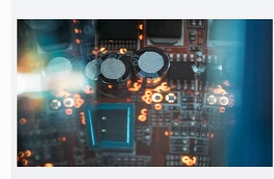1. Purpose:
In order to protect the safety of LEDs in PCBA processing and production, and through preventive measures, to ensure that the LEDs will not be damaged during the PCBA processing and production process.
2. Scope of application:
It is suitable for all LED lamps produced by PCBA PCBA processing.
3. Operation requirements:
3.1 PCBA processing production line and working table
3.1.1 The PCBA processing line and work surface for producing LEDs must be additionally equipped with electrostatic grounding wires. Mains grounding wires must not be used, and the potential difference between the electrostatic grounding wires and mains grounding wires shall not exceed 5V or the impedance shall not exceed 25Ω. The work surface must be covered with anti-static rubber sheet.
3.2 Plug-in
3.2.1 Before all plug-in personnel prepare to touch the LED, they must be equipped with a well-grounded wired anti-static wristband (including the process of removing the anti-static package and placing the LED in the anti-static component box).

3.2.2 All component boxes must use anti-static component boxes.
3.2.3 When inserting LEDs on the PCB board, do not bend the LED pins, and do not insert the positive and negative polarity reversely. Try not to touch the LED pins with your fingers.
3.3 Dip soldering
3.3.1 To ensure that the tin furnace has a good grounding wire, the operator must wear anti-static gloves to work.
3.3.2 The temperature of the immersion soldering furnace should be controlled at 245 degree Celsius±15 degree Celsius, and the immersion soldering time should not exceed 3 seconds;
3.3.3 The PCBA board that has just been dip-soldered should be gently placed on the anti-static board for natural cooling, and it should not be thrown or vibrated severely before it drops to room temperature.
3.3.4 When spraying flux, be careful not to get onto the surface of the parts.
3.3.5 Put the cooled PCBA board into the anti-static turnover box after dip soldering, and send it to the cutting process for cutting.
3.4 Cut the feet (this article is determined after testing)
3.4.1 To ensure that the foot cutter has a good grounding wire and a sharp cutter, the operator must wear anti-static gloves to work.
3.4.2 When cutting the feet, you must wait for the PCBA board to cool to room temperature. It is strictly forbidden to send the PCBA board that has just been immersed in the tin furnace and is still at a high temperature into the foot cutting machine to cut the feet.
3.4.3 When cutting the feet, the height of the cutting feet should be controlled within the range of 2.0-2.5mm, and the advancing speed of the PCB board on the track should not be greater than 10cm/sec.
3.4.4. Put the cut PCBA board into the anti-static turnover box, and send it to the repair welding process for repair welding.
Note: Another situation is to process and shape the LED before plug-in. This can ensure the safety of LED cutting, but it will also bring certain difficulties to the operation of the plug-in. For example, there is no long-leg operation to distinguish between positive and negative polarity. Easy, it will also increase a certain degree of difficulty when it is picked up by fingers, and the PCB board is also easy to detach from the substrate when it is transferred between stations.
3.5 Repair welding
3.5.1 It is necessary to ensure that the soldering iron used for the operation has a good grounding wire, and the operator wears a wired electrostatic ring for operation.
3.5.2 The PCB board with LED generally requires an electric soldering iron below 35W, and the temperature of the constant temperature soldering iron should be controlled within the range of 260 degree Celsius±20 degree Celsius for soldering operations.
3.5.3 When the operator is performing repair welding operations, the welding time for a single spot shall not exceed 3 seconds.
3.5.4 The PCBA board with OK repair welding is put into the anti-static turnover box and sent to the test process for testing.
3.6 Testing
3.6.1 To ensure that all test instruments have a good grounding wire, the operator must wear a wired electrostatic bracelet for work.
3.6.2 The test OK product is put into the anti-static turnover box and sent to the assembly process. The defective products are placed in a special anti-static box, marked, and sent to the maintenance process for repair.
3.7 Repair
3.7.1 The maintenance table, instruments and electric soldering iron used by the maintenance operator must have a good grounding wire, and the operator must wear a wired electrostatic bracelet to work.
3.7.2 The temperature of the soldering iron must be controlled within the range of 260 degree Celsius±20 degree Celsius for operation. The welding time of a single spot shall not exceed 3 seconds.
3.7.3 The LEDs removed from the PCBA board will be scrapped regardless of good or bad products, and must not be reinstalled on the light board for use.
3.7.4 The repaired product is returned to the test process, and after the test is OK, it is sent to the assembly process.
3.8 Assembly
3.9 Aging
3.10 Packaging